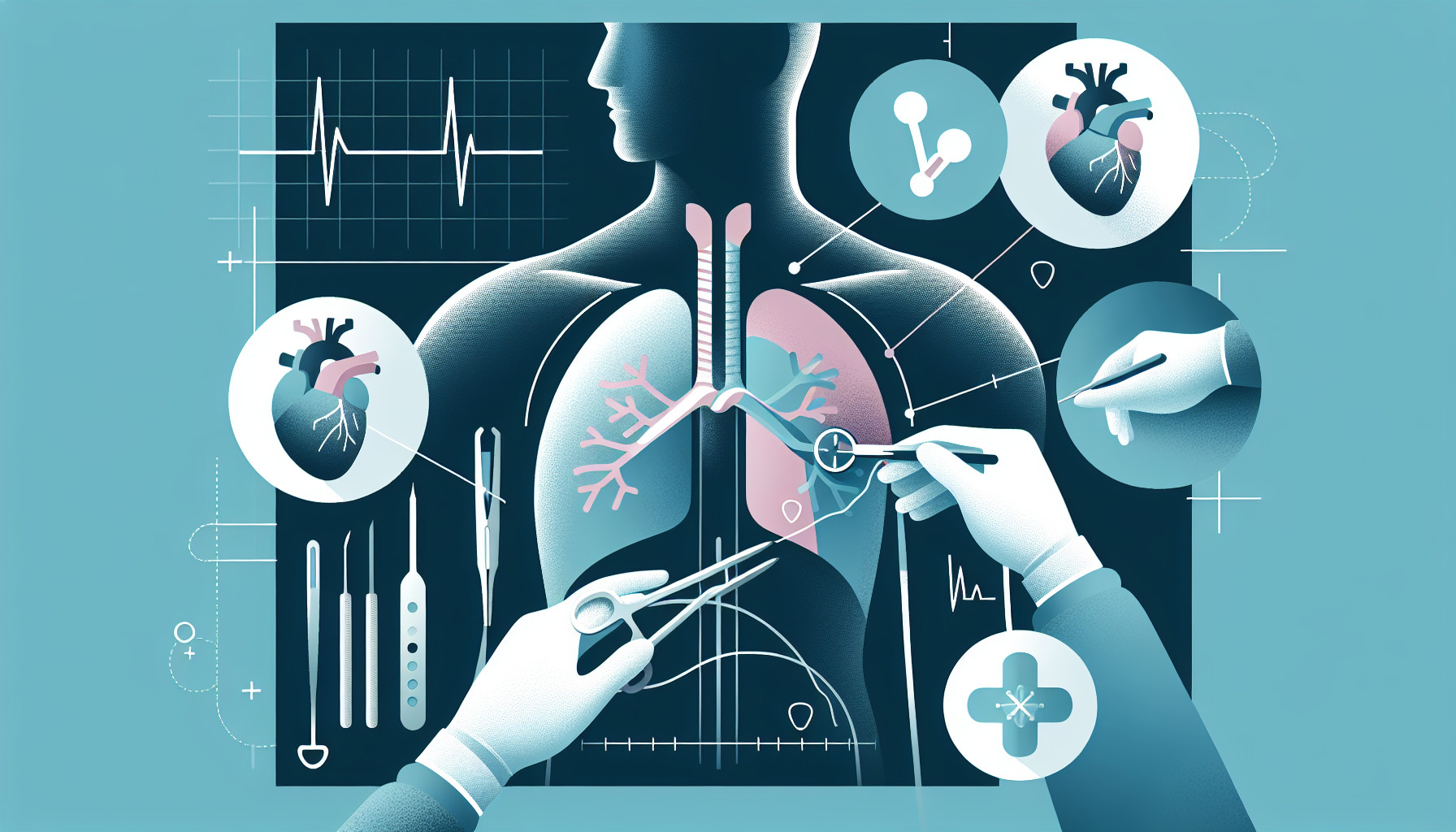Our Summary
This research paper does not provide an abstract, but from the keywords, one can infer that it discusses the relationship between COVID-19 vaccination and thoracic outlet syndrome. Thoracic outlet syndrome is a group of disorders that occur when blood vessels or nerves in the space between your collarbone and your first rib (thoracic outlet) are compressed. This can cause pain in your shoulders and neck
FAQs
- What is thoracic outlet syndrome surgery?
- How can COVID-19 or its vaccination impact thoracic outlet syndrome?
- Is there a connection between the COVID-19 vaccine and thoracic outlet syndrome?
Doctor’s Tip
One helpful tip a doctor might tell a patient about thoracic outlet syndrome surgery is to follow the post-operative instructions carefully to ensure proper healing and to minimize the risk of complications. This may include keeping the surgical site clean and dry, taking prescribed medications as directed, attending follow-up appointments, and gradually increasing activity levels as advised by the healthcare team. Additionally, it is important to communicate any concerns or changes in symptoms to the doctor promptly.
Suitable For
Patients who are recommended thoracic outlet syndrome surgery typically include those who have not experienced relief from conservative treatments such as physical therapy, medication, and lifestyle modifications. They may have severe symptoms that significantly impact their quality of life, such as persistent pain, weakness, and numbness in the arms and hands. Additionally, patients with structural abnormalities causing compression of the nerves and blood vessels in the thoracic outlet may be candidates for surgery. It is important for patients to undergo a thorough evaluation by a healthcare provider specializing in thoracic outlet syndrome to determine if surgery is the best course of action for their individual case.
Timeline
Before thoracic outlet syndrome surgery:
- Initial consultation with a healthcare provider to discuss symptoms and potential treatment options.
- Diagnostic tests such as imaging studies and nerve conduction studies to confirm the diagnosis of thoracic outlet syndrome.
- Pre-operative appointments with the surgical team to discuss the procedure, risks, and potential outcomes.
- Pre-operative instructions such as fasting before surgery and stopping certain medications.
- Surgery to address the underlying cause of thoracic outlet syndrome, such as removing a cervical rib or releasing compressed nerves and blood vessels.
- Post-operative care including pain management, wound care, and physical therapy to aid in recovery and rehabilitation.
After thoracic outlet syndrome surgery:
- Recovery period in the hospital or at home, depending on the extent of the surgery and individual healing process.
- Follow-up appointments with the surgical team to monitor healing and address any concerns.
- Physical therapy to improve range of motion, strength, and function in the affected area.
- Gradual return to normal activities and resuming work or sports as advised by the healthcare provider.
- Long-term follow-up to monitor for any recurrent symptoms or complications.
- Ongoing management of any residual symptoms or related conditions, such as nerve pain or muscle weakness.
What to Ask Your Doctor
- What are the potential risks and complications of thoracic outlet syndrome surgery?
- What is the success rate of this surgery in relieving symptoms of thoracic outlet syndrome?
- How long is the recovery time following thoracic outlet syndrome surgery?
- Are there any alternative treatments or therapies that could be considered before opting for surgery?
- What type of anesthesia will be used during the surgery?
- How many times have you performed thoracic outlet syndrome surgery, and what is your success rate?
- Will physical therapy be necessary after the surgery?
- What lifestyle changes or modifications will be needed after the surgery to prevent recurrence of thoracic outlet syndrome symptoms?
- How long can I expect to be in the hospital after the surgery?
- What should I do if I experience any unusual symptoms or complications after the surgery?
Reference
Authors: Suzuki T, Furuhata R, Iwamoto T. Journal: Intern Med. 2023 Jan 1;62(1):143-145. doi: 10.2169/internalmedicine.0604-22. Epub 2022 Oct 19. PMID: 36261378
